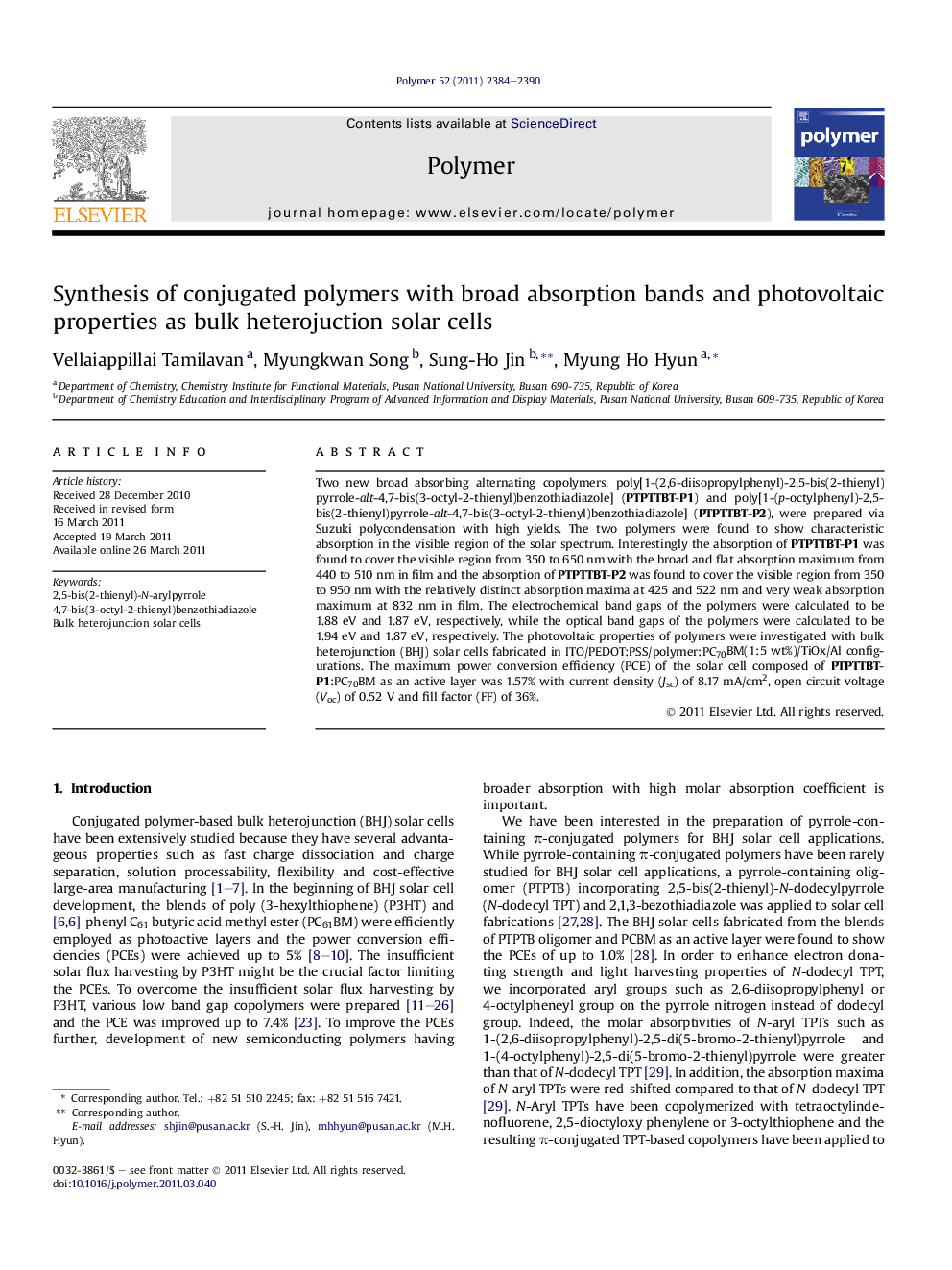| Article ID | Journal | Published Year | Pages | File Type |
|---|---|---|---|---|
| 5182766 | Polymer | 2011 | 7 Pages |
Two new broad absorbing alternating copolymers, poly[1-(2,6-diisopropylphenyl)-2,5-bis(2-thienyl)pyrrole-alt-4,7-bis(3-octyl-2-thienyl)benzothiadiazole] (PTPTTBT-P1) and poly[1-(p-octylphenyl)-2,5-bis(2-thienyl)pyrrole-alt-4,7-bis(3-octyl-2-thienyl)benzothiadiazole] (PTPTTBT-P2), were prepared via Suzuki polycondensation with high yields. The two polymers were found to show characteristic absorption in the visible region of the solar spectrum. Interestingly the absorption of PTPTTBT-P1 was found to cover the visible region from 350 to 650Â nm with the broad and flat absorption maximum from 440 to 510Â nm in film and the absorption of PTPTTBT-P2 was found to cover the visible region from 350 to 950Â nm with the relatively distinct absorption maxima at 425 and 522Â nm and very weak absorption maximum at 832Â nm in film. The electrochemical band gaps of the polymers were calculated to be 1.88Â eV and 1.87Â eV, respectively, while the optical band gaps of the polymers were calculated to be 1.94Â eV and 1.87Â eV, respectively. The photovoltaic properties of polymers were investigated with bulk heterojunction (BHJ) solar cells fabricated in ITO/PEDOT:PSS/polymer:PC70BM(1:5Â wt%)/TiOx/Al configurations. The maximum power conversion efficiency (PCE) of the solar cell composed of PTPTTBT-P1:PC70BM as an active layer was 1.57% with current density (Jsc) of 8.17Â mA/cm2, open circuit voltage (Voc) of 0.52Â V and fill factor (FF) of 36%.
Graphical abstractDownload full-size image
